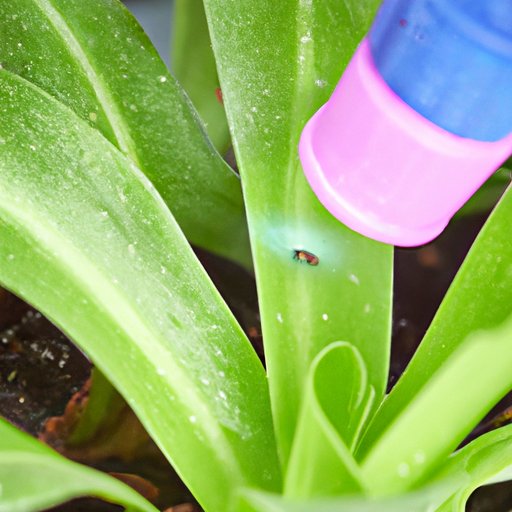Introduction
Fungus gnats are small, pesky insects that can make indoor gardening a bit more challenging. Their larvae feed on roots and organic matter, causing stunted growth and even death in plants. Additionally, they can be a nuisance in the household. The good news is that fungus gnats are not impossible to eliminate. In this article, we will discuss some effective solutions to get rid of these pests and prevent their recurrence.
Natural Repellents
Using natural repellents such as neem oil, cinnamon, or apple cider vinegar can be an effective way of eliminating fungus gnats. These natural repellents work by disturbing the life cycle and reproduction of these insects. Neem oil typically works quickly, as it suffocates the larvae and prevents the development of pupae. Cinnamon can be sprinkled over the soil to deter adult gnats from laying eggs. On the other hand, apple cider vinegar can be used as a trap to lure and drown adult gnats.
Chemical Solutions
While chemical solutions are generally frowned upon in indoor gardening, they can be used for quick and efficient elimination of fungus gnats. Pyrethrin and imidacloprid are two effective chemical solutions that can be used to kill these pests. However, their use is risky. Pyrethrin can be harmful to beneficial insects and some pollinators. Imidacloprid, on the other hand, has been found to be toxic to certain bird species. Therefore, it is important only to use chemical solutions as a last resort and with caution.
Removal of Larvae
Removing larvae from the top layer of soil is an effective means of eliminating fungus gnats. This method requires no chemicals, making it an excellent natural alternative to chemical sprays. A simple technique is to scrape off the top one to two inches of soil to remove larvae entirely. This process is best done early in the morning when the larvae are closer to the surface.
Changing the Watering Cycle
Changing the watering cycle can help kill larvae and ultimately decrease the gnat population. Overly-wet soil attracts fungus gnats, as the presence of fungi and algae feeds them. Watering less frequently can help eliminate these pests. Infrequent watering will also encourage plants to develop deeper roots, which will help them better tolerate dry spells and avoid waterlogged soil, a perfect breeding ground for fungus gnats.
Incorporating Succulents
Incorporating succulents like cacti in your indoor plantscaping can help reduce fungus gnat populations. Unlike other plants, succulents do not require as much water, which means they are less attractive to fungus gnats. Additionally, succulents typically have a well-draining soil mix, which makes it hard for larvae to survive. The natural growth habits of succulents – low and spreading – make it difficult for the growth of fungi and algae, which in turn reduces the fungus gnat population.
Prevention
As in most cases, prevention is key. Individuals can stop the spread of fungus gnats before they become a problem by maintaining proper plant hygiene, avoiding overwatering, and introducing beneficial microorganisms. One way to maintain proper plant hygiene is to remove any dead or decaying plant matter, as this can attract fungus gnats. Individuals can avoid overwatering by allowing the soil to dry between waterings. Finally, to introduce beneficial microorganisms that compete with fungus gnats, individuals can use a light tea made from compost or a commercially available microbial inoculant.
Conclusion
Fungus gnats are pesky insects that can make indoor gardening challenging. They can be eliminated using natural repellents, chemical solutions, removing larvae, changing the watering cycle, incorporating succulents, and by taking preventative measures. By maintaining proper plant hygiene, avoiding overwatering, and introducing beneficial microorganisms, individuals can stop the spread of fungus gnats and enjoy a thriving indoor garden.
